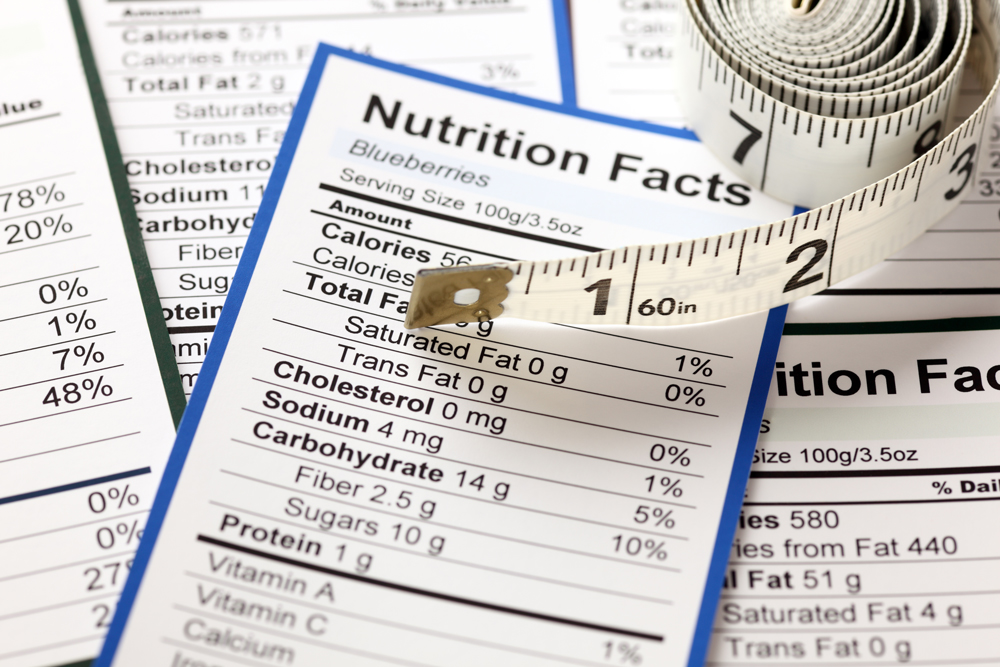 Last updated: May 24th, 2024 1:03 PM
Last updated: May 24th, 2024 1:03 PM
Food Labelling Regulations in India
All food products sold in India that are prepackaged must comply with the Food Safety and Standards (Packaging and labeling) Regulations, 2011. The Food Safety and Standards Regulation, 2011 is a notification issued by the Food Safety and Standards Authority of India under the Ministry of Health and Family Welfare. This article provides information regarding food labelling regulations in India.
Applicability of Food Labelling Regulations
The food labeling regulations require all "Prepackaged" or "Pre-packed food" to comply with the labeling regulations in India. Per the rules, prepackaged food means food placed in a package of any nature in such a manner that the contents cannot be changed without tampering and which is ready for sale to the consumer.
General Labelling Requirements
The following labelling requirements must be complied with by all prepackaged food sold in India:
- The label must be in English or Hindi, or the Devnagri language. In addition to the above, the title can contain Information in any other language, as required.
- The label must not contain Information about the food that could be deemed false, misleading, deceptive, or otherwise create an erroneous impression regarding the product.
- The label must be affixed to the container so that it would not easily be separated from the container.
- The contents or Information presented on the label should be clear, prominent, memorable, and readily legible by the consumer.
- If a wrapper covers the container, then the wrapper must contain necessary Information or make the label of the product inside readily legible by not obscuring.
- The name of the food must be mentioned along with the trade name and description. In case the food contains more than one ingredient, then a list of ingredients must be presented in descending order of their composition by weight or volume, as the case may be, at the time of its manufacture;
In addition to the above, there are various regulations concerning labelling that apply to multiple types of prepackaged foods. Hence, it's essential to consult a qualified FSSAI consultant about the label before launch.
Nutritional Information
Nutritional Information or nutritional facts per 100 gm or 100ml or servings of the product must be given on the label along with the following Information:
- energy value in kcal;
- the amounts of protein, carbohydrate (specify the quantity of sugar), and fat in gram (g) or ml;
- The amount of any other nutrient for which a nutrition or health claim is made:
It is important to note that any "health claim," "nutrition claim," or "risk reduction" claim made on the label will be thoroughly scrutinized by the FSSAI authorities. Hence, any such claim must be validated by test data. As per the rules, the following is the definition for "health claim," "nutrition claim," and "risk reduction" claim:
- "Health claims" means any representation that states, suggests, or implies that a relationship exists between a food or a constituent of that food and health and include nutrition claims which describe the physiological role of the nutrient in growth, development, and normal functions of the body, other functional claims concerning the specific beneficial effect of the consumption of food or its constituents, in the context of the total diet, on normal functions or biological activities of the body and such claims relate to a positive contribution to health or the improvement of position or to modifying or preserving health, or disease, risk reduction claim about the consumption of a food or food constituents, in the context of the total diet, to the reduced risk of developing a disease or health-related condition;
- "Nutrition claim" means any representation that states, suggests, or implies that a food has particular nutritional properties which are not limited to the energy value but include protein, fat carbohydrates, vitamins, and minerals;
- "Risk reduction" in the context of health claims means significantly altering a significant risk factor for a disease or health-related condition;
Veg or Non-Veg Symbol
All packaged food that is "Non-Vegetarian" must have a symbol that is a brown color-filled circle inside a square with a brown outline. If a food contains only egg as a non-vegetarian ingredient, then the manufacturer may provide a declaration that the product contains only egg and add the non-vegetarian symbol.
[caption id="attachment_3860" align="aligncenter" width="200"] Non-Veg Symbol
Non-Veg Symbol
Packaged vegetarian food should have a symbol that consists of a green color-filled circle inside a square green.
[caption id="attachment_3861" align="aligncenter" width="200"] Veg Symbol
Veg Symbol
Information Relating to Food Additives, Colours, and Flavours
Food additives in the food product must be mentioned along with class titles and specific names or recognized international numerical identifications. The addition of coloring matter should be noted on the label along with certain statements like "CONTAINS PERMITTED NATURAL COLOUR(S)," just beneath the list of ingredients on the label. If an extraneous flavoring agent is added, it should be mentioned in a statement like "CONTAINS ADDED FLAVOUR" just beneath the list of ingredients on the label.
Name and Complete Address of the Manufacturer
The name and complete address of the manufacturer must be mentioned on every package of food. In the case of imported food, the package must contain the name and full address of the importer in India.
Net Quantity
All packaged food must carry the bet quantity by weight or volume or number, as the case may be. The net amount of the commodity in the package must exclude the weight of the wrappers and packaging materials.
Lot Number of Batch Identification
A lot number, batch number, or code number must be mentioned on all packaged food so it can be traced during manufacturing and distribution. Only bread and milk, including sterilized milk, are not required to comply with this regulation.
Date of Manufacture or Packing
The date, month, and year in which the commodity is manufactured, packed, or pre-packed must be mentioned on the label. If food products have a shelf life of more than three months, then the month and the year of manufacture can be given with the "Best Before Date." If products have a shelf life of fewer than three months, the date, month, and year in which the commodity is manufactured or prepared or pre-packed must be mentioned on the label with the best-before date.
Country of Origin for Imported Food
For imported food, the country of origin of the food should be declared on the label of the food. If a food product undergoes processing in a second country which changes its nature, the country where the processing is performed should be considered the country of origin for labeling.
Instructions for Use
Instructions for use, including reconstitution, should be included on the label, if necessary, to ensure the correct utilization of the food.
For Information about starting a food business or to obtain FSSAI License/Registration, visit IndiaFilings.com
Popular Post

In the digital age, the convenience of accessing important documents online has become a necessity...

The Atalji Janasnehi Kendra Project that has been launched by the Government of Karnataka...

The Indian Divorce Act governs divorce among the Christian couples in India. Divorce...

When an individual has more than a single PAN card, it may lead to that person being heavily penalised, or worse,...

Employees Provident Fund (PF) is social security and savings scheme for employee in India. Employers engaged...


